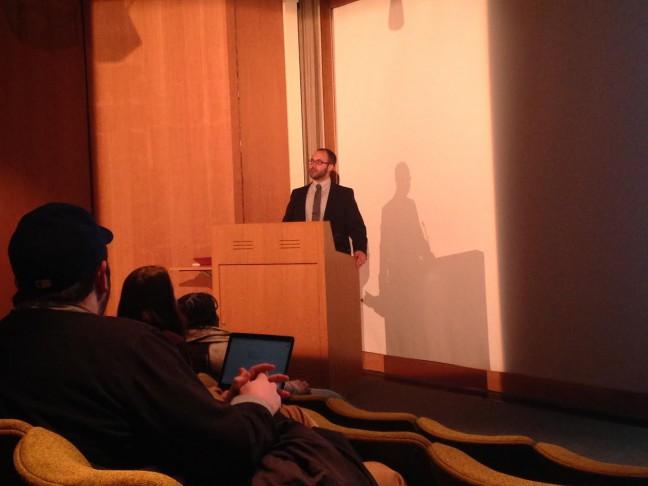Focusing on the history of police violence and the use of fatal force over the years, Simon Balto, a PhD candidate at the University of Wisconsin, spoke as part of the Black Lives Matter lecture series at the University of Wisconsin Thursday.
The lecture “Policing and Politics in Black Chicago” was cosponsored by the department of Comparative U.S. Studies and the Young, Gifted and Black Coalition.
Balto used the rise of organizations like the Young, Gifted and Black Coalition to highlight black activism historically surrounding police reform.
“Because of the resonance of the current movement of Black Lives Matter, I want to focus instead on what I suspect is the subject of greatest resonance to many people,” Balto said. “That is the talk about the history of police violence and the use of fatal force.”
The well known 1857 supreme court case of Dred Scott v. Sandford used language that effectively negated black citizenship and belonging, Balto said. In 1958 The Crusader Newspaper used almost identical language to talk about police brutality and it’s burden upon black people, he said.
“What has hit me again and again when it comes to these questions of race and police violence is how little things have changed in many ways over the past three or four generations,” Balto said.
Balto discussed the grassroots groups We Charge Genocide’s condemnation of the Chicago Police Department violation of six United Nation ordinations. The CPD is in violation of torture because of its cruel, inhumane and degrading treatment of black people in Chicago, Balto said.
Balto also mentioned the recent controversy of Homan Square, the police complex on Chicago’s West Side that has been likened to a CIA black site by the Guardian.
“When I look at 2014 and 2015’s landscape I feel in some ways twice broken, both for the obvious reasons as a human and activist and also for the fact that as a historian I am astounded by the multigenerational gulf from then to now and the mirror images I see,” Balto said.
The history of police violence in Chicago began a century ago when the city began absorbing a large black population, Balto said. Public policy would emerge as a factor in restricting black mobility around the city and reinforcing segregation, he said.
New waves of black immigration to Chicago reignited racial conflict as white neighborhoods erupted into mini riots as they tried to repel black people from moving in, Balto said. Protection from the police was difficult to secure as the growing black population was forced into the south side, Balto said.
“Such violence was in part the product of increasing and ever widening senses of police officers that the black people around them were a foreign presence,” Balto said.
The system has been rotten for a very long time, Balto said. A combination of enhanced sentencing penalties and zero tolerance policies reshaped the landscape of political opportunities with the criminal justice system, he said.
This story has played out in similar ways in other cities elsewhere, Balto said.
“Not all of us see it, but this is the context for much of America,” Balto said. “It is part of the long context for Black Lives Matter.”


